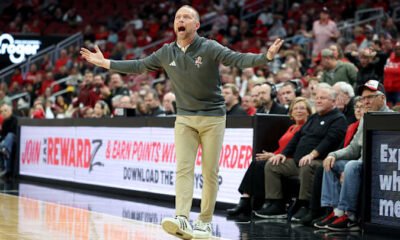Blog
Nick Saban, Ryan, and Kelly are Rank the new York Times lists the Top 25 college football Best Coaches of the Twenty- first century
In a landmark feature published earlier this year, The New York Times unveiled its definitive ranking of the “Top 25 College Football Coaches of the Twenty-first Century,” affirming once again that the modern era of the sport has been defined as much by the men on the sidelines as by the athletes on the field. Topping the list at No. 1 was Nick Saban, whose incomparable record at Alabama and LSU set a standard for excellence that peers have struggled to match. Hot on his heels, and nestled within the upper echelon, were Ryan Day of Ohio State—whose meteoric rise culminated in a national championship in January 2025—and Brian Kelly, whose long, winding journey through Division II, the Mid-American Conference, Notre Dame, and now LSU represents the breadth of college football’s coaching landscape.
The Architect of Modern Dynasty: Nick Saban
Few coaches have reshaped a program so thoroughly as Nick Saban did in Tuscaloosa. Since arriving at Alabama in 2007, Saban engineered six national titles in nine appearances, amassing an official collegiate record of 292–71–1 by the end of his tenure in 2023—an astonishing winning percentage north of .800 ﹘ numbers that speak not only to talent but to consistency at the highest level .
Saban’s impact transcended pure wins and losses. He introduced the “Process”—a philosophy that values incremental improvement, relentless attention to detail, and an ethos where no single player or coordinator is larger than the system itself. This blueprint not only delivered championships in 2009, 2011, 2012, 2015, 2017, and 2020 but spawned a coaching tree that now shades much of the Power Five landscape . Under his guidance, Alabama became a perennial NFL talent factory, producing four Heisman winners and over a hundred draft picks, reinforcing Saban’s reputation as both recruiter and developer of elite talent.
But perhaps most remarkable was Saban’s adaptability. When offensive paradigms shifted toward spread concepts and high-octane scoring, he retooled Alabama’s attack without surrendering defensive dominance—a testament to a coach unwilling to rest on legacy, ever-evolving in pursuit of another title.
The Young Patriot: Ryan Day
If Saban represents the zenith of a storied career, Ryan Day exemplifies the rapid ascent possible in today’s game. A former offensive coordinator under Urban Meyer, Day took the reins at Ohio State in 2019 and immediately stamped his authority: back-to-back Big Ten titles in his first two seasons, a feat not seen at OSU in four decades . Yet it was January 20, 2025, when Day led the Buckeyes to a 34–23 victory over Notre Dame in the College Football Playoff National Championship—Ohio State’s first national title since 2014—that cemented his place among the coaching elite .
Day’s Ohio State teams have been characterized by explosive offenses balanced with opportunistic defenses. His first championship run featured a daring transfer portal strategy—embracing Name, Image, and Likeness (NIL) deals to retain key talent—that proved decisive in clutch games. In interviews following the title game, Day credited his staff’s willingness to innovate and players’ buy-in to a culture that demands excellence every day, not just on Saturdays .
Despite the weight of expectation in Columbus, Day has navigated adversity with poise. Critics pointed to his initial struggles against Michigan, but following that January triumph, his leadership was lauded as crucial in maintaining Ohio State’s national stature, especially when facing the relentless media scrutiny that accompanies high-profile programs .
The Perennial Builder: Brian Kelly
While Saban and Day may occupy the limelight, Brian Kelly represents the archetype of a coach whose career is defined by transformation and resilience. Kelly’s journey began in the Division II ranks at Grand Valley State, where he engineered back-to-back national championships in 2002 and 2003, guiding the Lakers to a staggering 118–35–2 record over 13 seasons .
At Central Michigan and Cincinnati, Kelly honed his offensive acumen before capturing global attention at Notre Dame. From 2010 to 2021, he led the Fighting Irish to 11 bowl games, including appearances in the 2013 BCS National Championship and two College Football Playoffs ﹘ remarkable feats for a program often held to the lofty standards of its mid-century heyday . In 2022, seeking a fresh challenge, Kelly accepted the head coaching role at LSU, where he aims to restore the Tigers to SEC prominence, leveraging his reputation as a tireless recruiter and a strategist unafraid to adapt his schemes.
Kelly’s hallmark is his gardening—nurturing talent at the grassroots level and constructing cultures that endure beyond his tenure. Players and assistants praise his meticulous preparation and his ability to motivate through genuine personal investment, qualities that have earned him Coach-of-the-Year honors in multiple conferences.
Coaching Philosophies in Contrast
Though Saban, Day, and Kelly share the top-25 listing, each embodies a unique approach that underscores modern college football’s tactical diversity:
- Process vs. Artistry
Saban’s rigid “Process” contrasts with Day’s offensive artistry—spread formations, read-option concepts, and tempo control—while Kelly melds both, emphasizing structure alongside innovation. - Recruiting Machines
All three coaches understand that championships begin in November but are won in the recruiting trenches. Saban’s Alabama routinely lands multiple top-10 national classes; Day, buoyed by Ohio State’s storied brand, has similarly reeled in top-tier prospects; Kelly, leveraging his Notre Dame pedigree, revitalized LSU’s pipeline. - Adaptability
Saban’s mid-career offensive shift, Day’s portal-driven roster management, and Kelly’s seamless moves between divisions illustrate a shared willingness to evolve—a trait increasingly essential in an era of NIL and transfer mobility.
Defining Moments and Head-to-Head Battles
The rivalry between these coaches, while indirect (bar Kelly vs. Day at neutral-site matchups and Saban vs. Day in playoff contexts), has produced some of the century’s most memorable games:
- 2019 Rose Bowl Rematch: A tactical chess match between Saban’s defense and Day’s offense, ending in a narrow Alabama victory that foreshadowed Ohio State’s future success.
- 2013 BCS Title Game: Kelly’s Notre Dame fell agonizingly short against Saban’s Tide in a 42–14 defeat, yet Kelly’s program gained national respect for reaching the final—proof that perception can shift even in loss.
- 2025 CFP Championship: Day’s triumph over Kelly’s LSU team (via a hard-fought semifinal victory) underscored a changing of the guard, as the Buckeyes’ emerging coach matched wits with Kelly’s established strategist.
Legacy and the Future of the Game
As the NYT panel noted in its analysis, these coaches have not only won titles but have reimagined what it means to lead in a landscape defined by:
- Data Analytics: All three staffs integrate advanced metrics for everything from play-calling to injury prevention.
- Player Empowerment: From social-media training to NIL negotiation, their programs balance institutional control with individual branding.
- Mental Health and Welfare: Recognizing the pressures on student-athletes, each coach has expanded support systems—a shift from yesterday’s “tough-it-out” mentality.
Their combined achievements account for 14 national championships, over 90 conference titles, and hundreds of All-Americans and NFL draftees—numbers that will only grow as Day’s career unfolds and Kelly’s Louisiana tenure matures.
Beyond the Numbers: Coaching as Storytelling
At its heart, the NYT feature framed coaching excellence as a narrative art form. Saban, Day, and Kelly each craft stories—of redemption (Saban reviving Alabama), of youthful exuberance (Day’s Ohio State renaissance), and of transformational arcs (Kelly’s program turnarounds). Their legacies will be measured not just in wins but in the lives they’ve influenced, the innovations they’ve pioneered, and the cultural shifts they’ve championed.
In compiling its Top 25, The New York Times did more than rank trophies and winning percentages; it celebrated the complex tapestry of leadership, strategy, and human drama that unfolds every fall. As fans pore over the full list—spotlighting up-and-comers like Kirby Smart, Dabo Swinney, and Lincoln Riley—they’ll see in Saban, Day, and Kelly the benchmarks for greatness in an ever-evolving game.
For today’s coaches, the takeaway is clear: to enter this pantheon, one must blend unyielding discipline, daring innovation, and an unwavering commitment to the student-athlete experience. And for the rest of us, the joy is in witnessing these master storytellers spin their seasons of triumph, heartbreak, and ultimate redemption under the bright lights of college football.
Certainly! Here’s an extended continuation of the story, diving deeper into Nick Saban’s post-retirement influence, Ryan Day’s potential legacy, Brian Kelly’s bold moves, and what their careers say about the state of college football as we enter the second half of the twenty-first century.
Nick Saban: The Legend Who Never Left
Although Nick Saban officially stepped away from coaching in early 2024, his presence remains unmistakable in the world of college football. His name is invoked in every coaching hire, every team culture discussion, and every comparison when a coach begins to build something special. Post-retirement, Saban has not faded into the background. Instead, he’s taken on a senior advisor role at Alabama and occasionally joins ESPN as a guest analyst, where his breakdowns of defensive schemes and coaching psychology have become must-watch content for fans and aspiring coaches alike.
But perhaps Saban’s most enduring influence is his coaching tree. Former assistants like Kirby Smart (Georgia), Lane Kiffin (Ole Miss), Steve Sarkisian (Texas), and even former players now coaching at the high school and college levels carry forward the lessons of “The Process.” His methodologies on practice structure, recruiting evaluation, and staff delegation are studied like scripture. Football programs across the country—even those far from the SEC—have adopted “Sabanisms” into their organizational DNA.
His retirement also ushered in conversations about coaching burnout and sustainability. Few men have worked as relentlessly and meticulously as Saban did for over four decades. Yet his success also raises uncomfortable questions: Is it possible to build a dynasty like Alabama’s today without sacrificing personal time, relationships, and rest? As more programs emphasize mental health for players, the same questions are now being asked about coaches.
Saban, ever the teacher, continues to lecture at leadership seminars and conferences, often emphasizing that greatness is a byproduct of daily discipline, not results. That message continues to resonate long after his last game.
Ryan Day: The Face of a New Era
At just 46, Ryan Day already boasts a resume that rivals some Hall of Fame coaches. His 2025 national title put him in rare company as one of the youngest coaches to win it all, and analysts widely agree that he’s only getting started. But what makes Day particularly fascinating is the era he’s coaching in—an age defined by transfer portals, NIL deals, social media, and unprecedented player movement.
Where others see chaos, Day sees opportunity. Under his guidance, Ohio State was one of the first schools to formally partner with NIL firms, offering players media training, financial literacy courses, and personal branding coaches. Day also pushed for changes in NCAA guidelines that allow greater flexibility for students transferring between schools, arguing that “college football must reflect the freedom we grant other students and professionals.”
Tactically, he is an innovator. His offensive schemes combine the pro-style principles of NFL mentors like Chip Kelly with modern spread concepts. His teams are fast, dynamic, and intelligent. Players describe his practices as “chess matches in real time,” where adjustments are constant and autonomy is encouraged.
But legacy is not written in one season. As Ohio State fans now expect championship contention every year, Day will be tested not only in game planning but in managing expectations, media pressure, and locker room cohesion. Still, his cool temperament, intellectual approach, and open-door policy have positioned him as the prototypical modern coach—less authoritarian, more mentor.
Brian Kelly: The Journeyman’s Last Act
Brian Kelly’s journey has been defined by reinvention. At Grand Valley State, he was a program builder. At Central Michigan and Cincinnati, he was a climber. At Notre Dame, he was a restorer of tradition. And now, at LSU, he is chasing unfinished business: an SEC Championship and a national title in the sport’s toughest conference.
Critics were skeptical of his decision to leave Notre Dame in 2021, citing culture shock and questions about whether he could recruit in the Deep South. But Kelly proved adaptable. He quickly won over high school coaches in Louisiana and Texas, revamped LSU’s offensive playbook to suit SEC defenses, and emphasized player development and discipline—two areas where LSU had struggled post-Orgeron.
While Kelly’s LSU tenure has not (yet) yielded a national title, he’s already beaten Alabama twice and positioned the Tigers as a top-five recruiting power. His blend of traditional toughness and analytical precision makes LSU a feared and respected opponent.
Kelly also speaks openly about the evolving pressures on head coaches. In press conferences, he has advocated for a “cooling period” in the transfer portal, and he supports profit-sharing models that would give athletes a share of television revenue. In this sense, Kelly’s impact is not just tactical, but political and structural, helping shape the next generation of the sport’s governance.
The Broader Message: What Makes a “Great Coach” Today?
The NYT’s list of the top 25 coaches of the 21st century doesn’t just reflect win-loss records. It reflects a paradigm shift in what coaching excellence looks like. A “great coach” today must:
- Be a CEO, not just a play-caller: managing a $150M athletic department, staff of 50+, and a roster of 100 players.
- Navigate public and media scrutiny 24/7: Every quote, tweet, or sideline reaction can go viral.
- Serve as a father figure, therapist, entrepreneur, and public figure—all in one.
Saban, Day, and Kelly each demonstrate different facets of this evolution. Saban, the relentless perfectionist who created a replicable empire. Day, the millennial tactician who leads with emotional intelligence and tech-savvy strategy. Kelly, the career veteran who has seen every version of the sport and still finds ways to adapt.
The Times also hinted that the next generation of elite coaches—from Deion Sanders at Colorado to Dan Lanning at Oregon—may well rise into this pantheon. Yet the benchmarks remain the same: consistency, innovation, integrity, and the ability to lead young men through one of the most formative periods of their lives.
Conclusion: Legends in the Making
Whether you’re an Alabama loyalist, a Buckeye diehard, or a Tiger faithful, the truth remains: watching Nick Saban, Ryan Day, and Brian Kelly over the past two decades has been a masterclass in leadership. Their stories intertwine at the crossroads of sport, education, business, and culture.
As the college football landscape continues to evolve—with expanded playoffs, conference realignment, and increasing commercialization—these coaches have not merely adapted. They have led.
And while Saban may have exited the field, his influence continues to echo through the whistle of every practice, the intensity of every locker room speech, and the strategy of every Saturday showdown. Meanwhile, Day and Kelly remain on the sidelines, driven by their own visions of greatness, knowing full well that history is watching.
In the end, the New York Times list is more than a ranking. It is a reminder that coaching is not just about calling plays—it’s about shaping people, programs, and possibilities. And in that sacred mission, Saban, Day, and Kelly have truly excelled.
-

 Blog5 months ago
Blog5 months agoPat Kelsey sends a strong three-word fiery message to the Louisville basketball’s team after their Cardinals 14th win…
-

 Blog7 months ago
Blog7 months agoNetflix releases “The Underdog,” a much-anticipated documentary about Drew Brees. slated for publication on the 25th
-

 Blog5 months ago
Blog5 months agoMikaela Shiffrin responds to cross-country skier Jessie Diggins’ letter following her failure to secure a solitary podium finish at the FIS Nordic Worlds
-

 Blog3 months ago
Blog3 months agoBehind the Turns: Netflix’s Upcoming Documentary on Mikaela Shiffrin’s Fights, Fears, and Love
-

 Blog4 months ago
Blog4 months agoLegacy Tour Led Zeppelin has officially confirmed their 2026 reunion tour, which will be their first extensive live performances since 2007. The “Led Zeppelin Legacy Tour 2026” will begin on June 10, 2026, at Los Angeles’ SoFi Stadium.
-

 Blog5 months ago
Blog5 months agoWomen’s Slalom Run 1 at the FIS Alpine Skiing World Cup: Are
-

 Blog5 months ago
Blog5 months ago“Courtside to Aisle-Side: Tyrese Haliburton and Jade Jones Set New Wedding Date”
-

 Blog7 months ago
Blog7 months agoFederica Brignone: “I’m fine, but my return to skiing is far off.”
